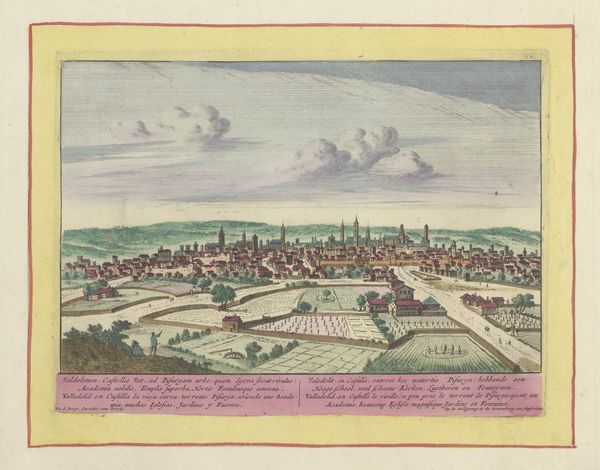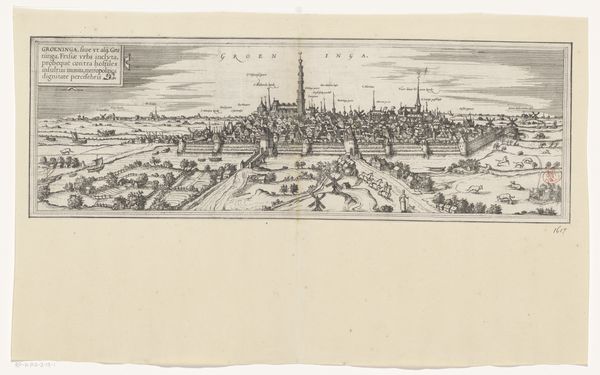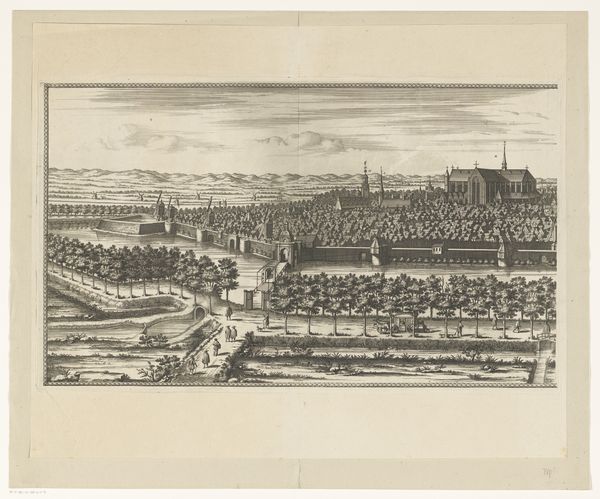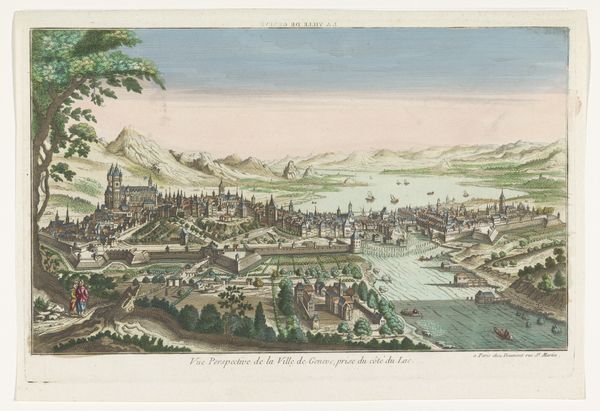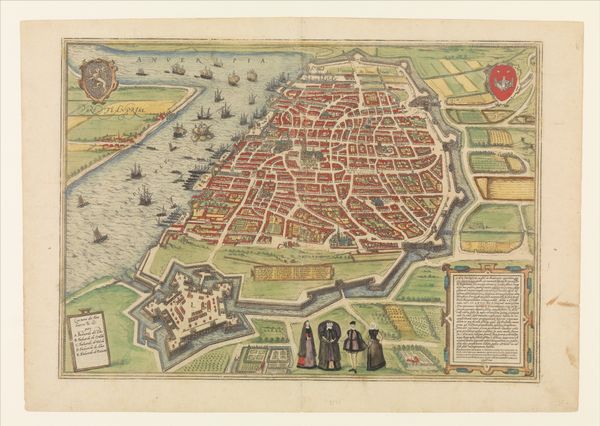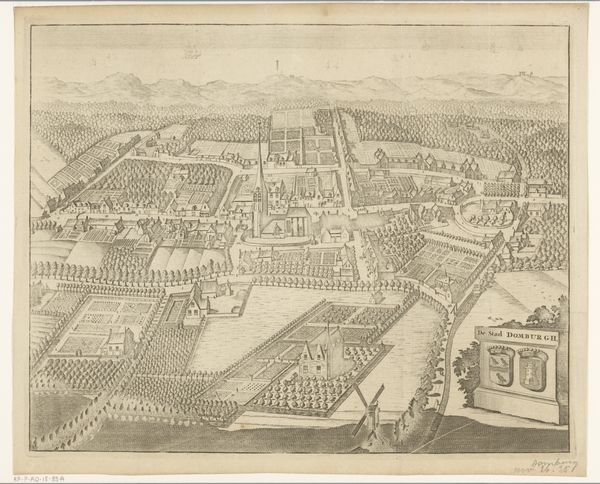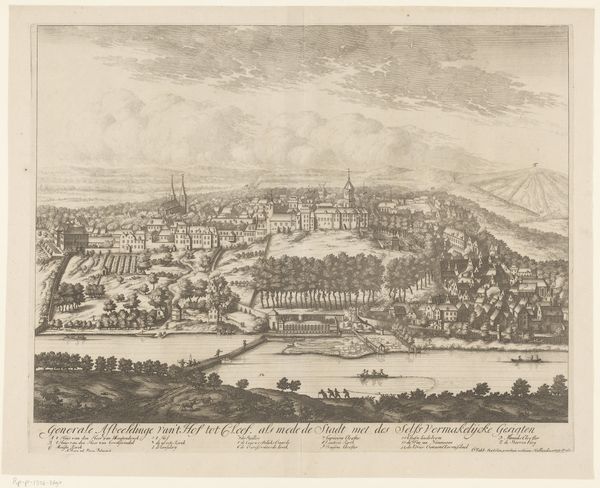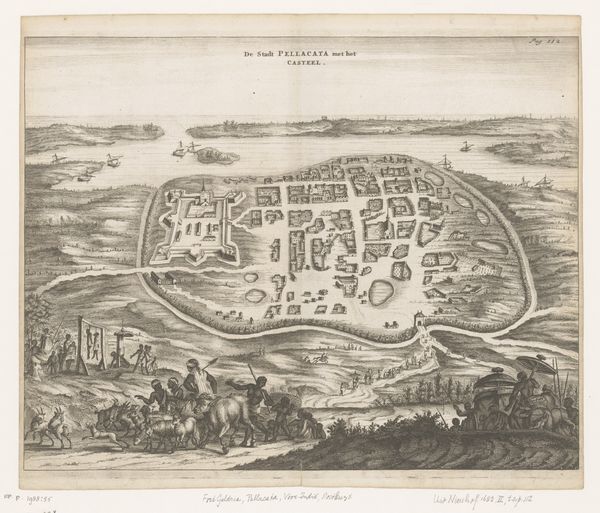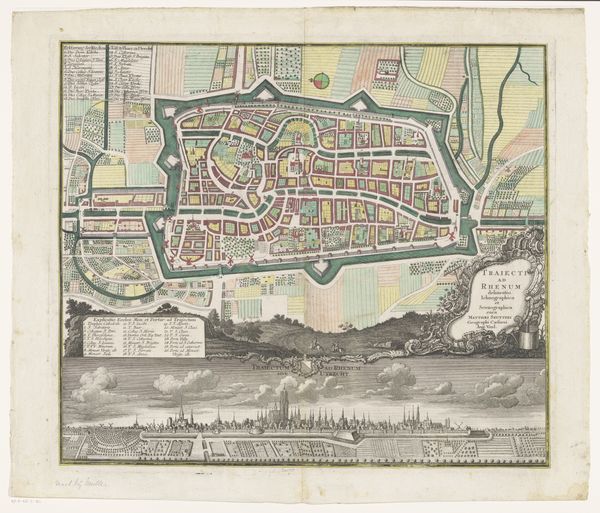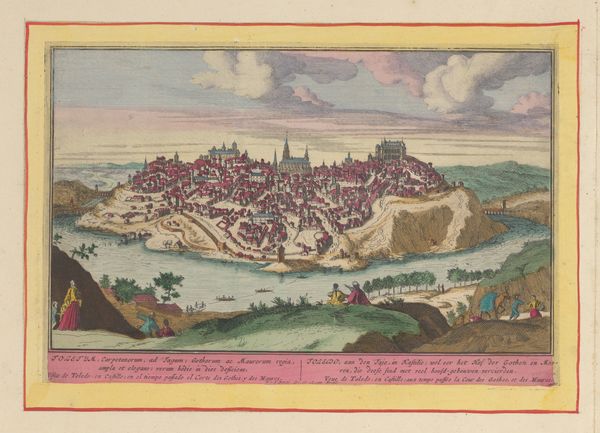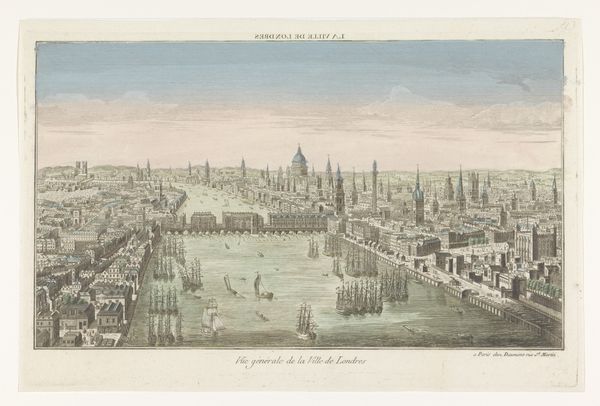
watercolor
#
neoclacissism
#
landscape
#
watercolor
#
cityscape
#
watercolour illustration
#
watercolor
Dimensions: height 278 mm, width 426 mm
Copyright: Rijks Museum: Open Domain
Curator: Here we have “Gezicht op de stad Rome,” or “View of the City of Rome,” a watercolor by Louis-Joseph Mondhare, dating from around 1759 to 1796. Editor: Oh, that’s interesting! It's… peaceful, almost serene, despite being a cityscape. All those neatly arranged fields in the foreground kind of tame the wild history I usually associate with Rome. Curator: Indeed. Cityscapes like this weren’t just about documentation; they served a purpose. The orderly representation of urban spaces reflected the Enlightenment ideals of reason and control, projecting an image of Rome as a manageable, civilized space. Editor: Manageable, maybe for the artist’s patron! All those tiny figures working the land, in their bright clothes - are they blissfully unaware or deliberately ignoring the looming city on the horizon? Maybe they don’t even care, you know? Sometimes, I get so tired of history. Curator: You make an excellent point about perspective. We must consider who these images were for. The composition reinforces a social hierarchy with nature and the rural population literally in the foreground, almost framing Rome as an elite’s domain. Editor: Like, here's your garden with quaint peasants. Now, admire my city! It’s a stage, almost… beautifully artificial. Curator: In fact, Neoclassical art of this period, which this watercolor typifies, revived the classical ideals of order and proportion. Rome became, again, the capital of Western art, as ruins, statues and buildings became popular tourist destinations. Editor: It makes me think about power, too. This piece might say less about Rome than about what someone *wanted* Rome to represent. Kinda makes you wonder about what future societies will see when they examine depictions of our modern cities! Curator: A valuable takeaway! Perhaps studying these pieces teaches us not just about history, but about how the present constantly rewrites our understanding of the past. Editor: Totally! I initially dismissed this work for not showing Rome how *I* imagined it, but that just proves art is just a dialogue between me, the artist, and history all at once. I should make my own painting of the city… that'll fix it.
Comments
No comments
Be the first to comment and join the conversation on the ultimate creative platform.
